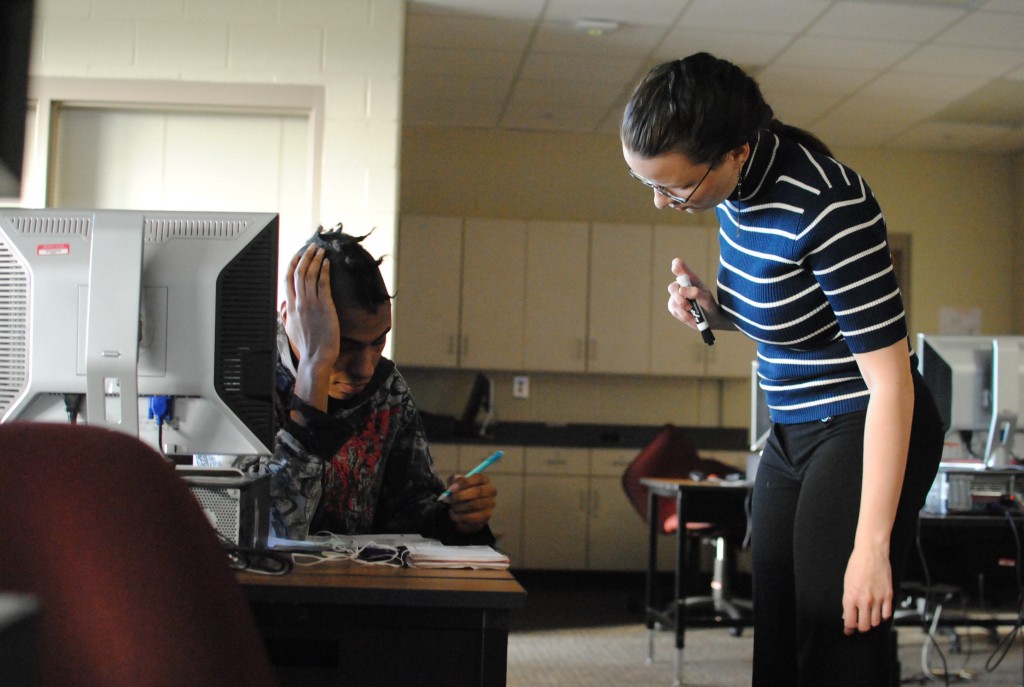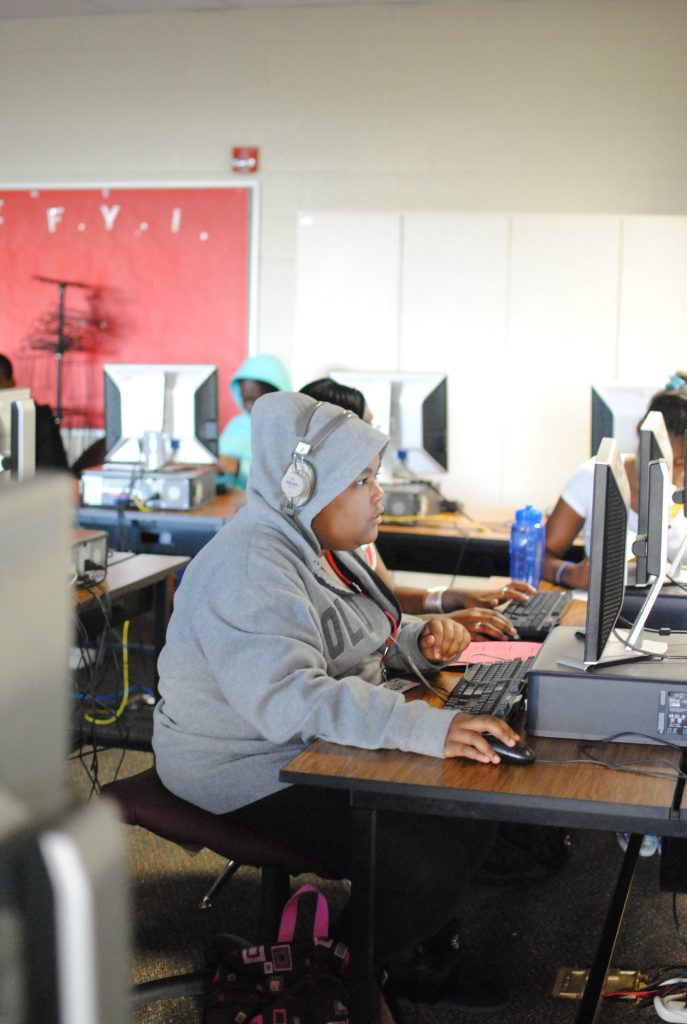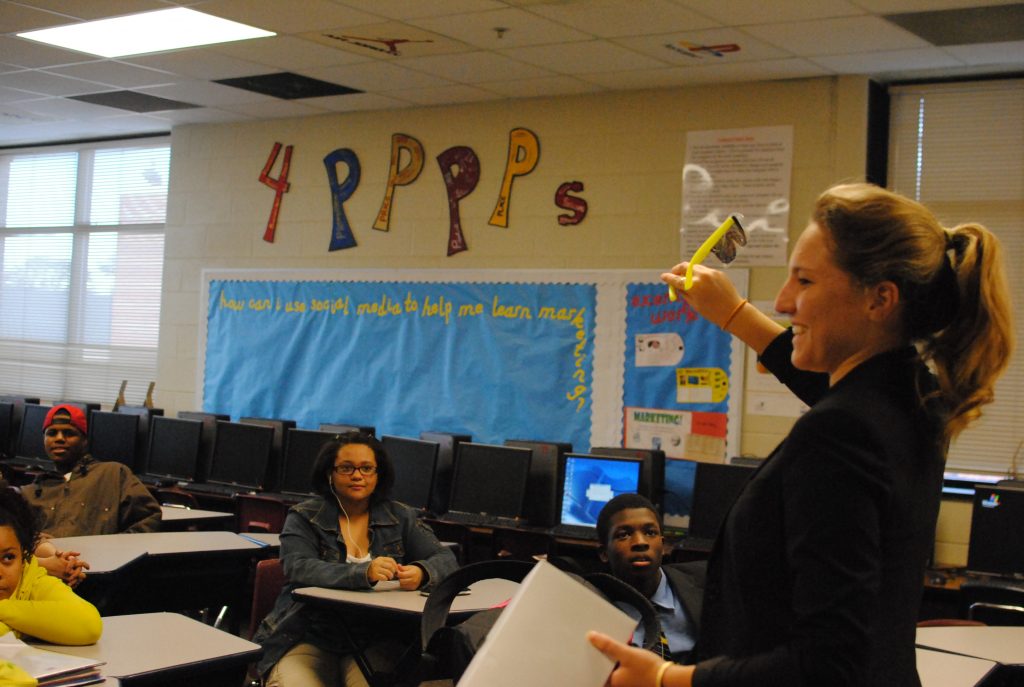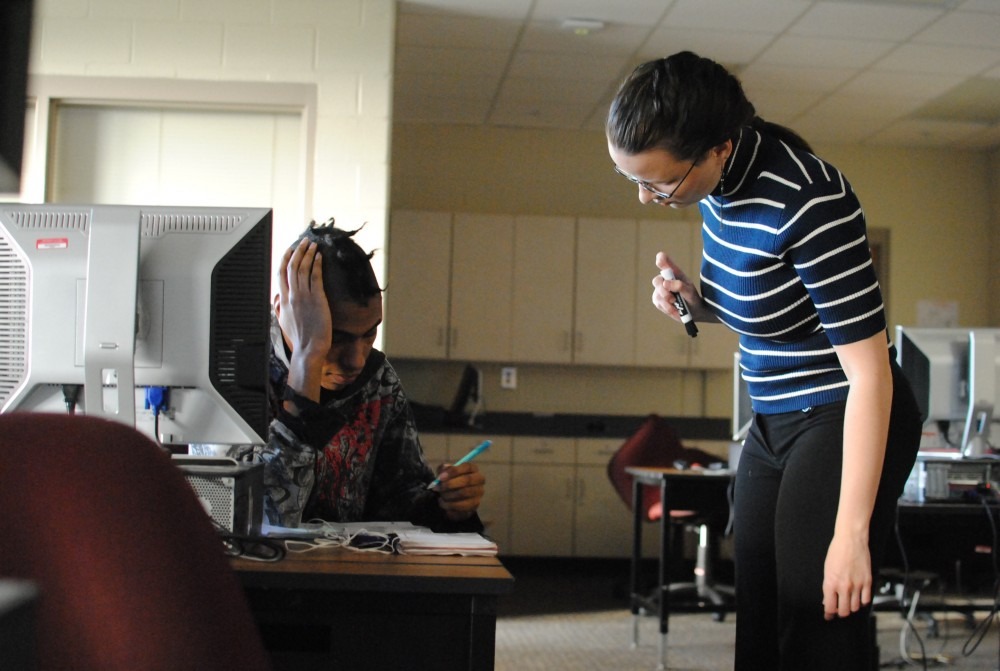By DORY MACMILLAN – Features Editor
In the 2010-11 school year, the 21st Century Community Learning Centers grant funded both new and old clubs at Clarke Central High School. This year, the grant only funds clubs comprised of specifically targeted students.
During the 2010-11 school year, Clarke Central High School students left the building later in the day than in years past, with clay on their hands from the Pottery Club, sweat on their brows from the Tae Kwon Do Club or the taste of homemade treats on their lips from the Top Chef Club.

Photos by Porter McLeod
“More students stayed after school (last year) than normally did in the past,” Burney-Harris Lyons Middle School’ Gifted Coordinator Laura Ambrose said. “Students were able to take some interesting courses and our staff was able to interact with students outside the classroom.”
Ambrose was co-coordinator of the 21st Century Community Learning Centers grant program last year along with Oconee County High School Assistant Principal Brian Deitz, both of whom changed schools after the 2010-11 school year. Received in the summer of 2010, funding from the 21st Century grant allowed new clubs to be formed, old clubs to receive funding and teacher sponsors to be paid for staying overtime. The grant was written by Dr. Toni Reed, Director of Grants and Research, and Dr. Monica Knight former Director of Student Achievement and Educational Equity, both employed by the Clarke County School District.
“(They) then came back and said (we had received funding from) the 21st Century grant,” CCHS Principal Dr. Robbie P. Hooker said. “It first started out at middle schools before it came to our school, then it was expanded to the high school level.”
There was a diverse list of clubs offered last year at CCHS, including the Cycling Club and the Art Club. However, after an examination of finances made in the summer of 2011, it was realized that the money was not being used for its intended reason.
“The first year we were told that any (club) could become a part of the 21st century no matter what clubs (the school) had,” Hooker said. “But after going through an audit by the state department, (it was discovered that) we were given the wrong directions as to how it was supposed to be used.”
The money received from the grant is to be used for students identified as “at risk.” In most cases, this means that the students have repeated a grade or are behind in earning credits. They might also be economically disadvantaged, according to CCHS trainer and current 21st Century Grant coordinator Ryan Johnson. This restriction has caused a significant change from last year, when the majority of regularly-meeting meeting clubs were funded by the 21st Century grant.
“Because (regularly-meeting) clubs were already up and running and available to students they should not have been included in the 21st Century,” Johnson said.
Some see this change unfortunate considering last year’s successes with the grant-funded clubs. “I believe that students were able to make connections that kept them involved and in return they had a feeling of belonging,” Deitz said.
CCHS senior Nina Broocks took part in the 21st Century program during the 2010-11 school year and felt there to be many benefits from the grant.
“The clubs got money so it could help pay for things we couldn’t do normally,” Broocks said. “I don’t usually exercise and the Tae Kwon Do was just a way to exercise and have fun and meet new people.”
 Broocks is ineligible to participate in the program for several reasons. This is a change she feels to be unfortunate.
Broocks is ineligible to participate in the program for several reasons. This is a change she feels to be unfortunate.
“I think that they should offer it to everybody,” Broocks said. “(They should) give everybody an opportunity even if they (do) not (have) the qualities they want for the program.”
Other changes have taken place since the audit was made. For example, there is more time after school for these programs to take place.
“(The program is) much longer. Last year, everything shut down about 5:15 p.m. (This year) we start at 3:50 p.m., and we run to 5:45 p.m., and the kids get on the bus and go home,” Johnson said.
There is also a remarkable change in the program in terms of size. There are fewer students to fill a large variety of programs, both academic and extracurricular, due to the clubs only targeting students considered “at risk.”
“Last year we served about one-third of the student body (out of 1500 students) at CCHS. This year we’re at about 40 students,” Johnson said. “We have a good diversity of clubs. We’re fortunate enough that a variety of clubs don’t cost as much money to run because they’re UGA student-led. We’re just much smaller.”
The size of the program has been a source of frustration to Johnson and 21st Century Grant Co-coordinator and English department teacher Erin Cawthon. Cawthon also teaches English as part of the program.
“It’s frustrating that we don’t have the participant numbers we would like to have, but we’re working on that,” Cawthon said. “We’ve emailed teachers, we’ve called parents, we’ve asked kids, we’ve pretty much begged.”
Although now catering to a much smaller group of students, the grant-funded after school program, has still been successful. There are many clubs to join and various opportunities for academic help.
“Some students have brought their grades up,” Cawthon said. “Some students have benefited from the assistance they’re getting to prepare for (End of Course Tests).”
Student participants have also been generally positive about the program. CCHS freshman Natoria Simpson participates in the program every day it is offered. She believes the 21st Century program has been very helpful.
“I like that it makes my grades improve through the tutoring,” Simpson said. “It’s very educational. It’s just a good program.”
However, clubs such as the Pottery Club have been disbanded, as all clubs must follow the standards to qualify for the grant.
“If (the Pottery Club is) going to be part of the grant, they have to submit lesson plans and relate it to standards,” Johnson said.
 New clubs have also been created in the 2011-12 school year, some of which provide academic support and tutoring, while others provide insight into future careers.
New clubs have also been created in the 2011-12 school year, some of which provide academic support and tutoring, while others provide insight into future careers.
“We brought in a program called “JA ( Junior Achievement) Fellows,” which gives kids the idea of what being in a business world is like. They are going to essentially create their own company,” Johnson said. “We (also) have a group called “Project Generation D,” which is focused on video and media production.”
Similarly to last year, clubs meet Monday through Thursday, funded by the 21st Century grant. Also like last year, the teachers who sponsor clubs after school are being paid overtime.
“We have to be available for providing services for sixteen hours (every week),” Johnson said. “We have staff available to do homework help for 1 hour every morning.”
Although changes have been made, the program has still been very successful, according to Johnson. Size remains the most frustrating factor.
“About half the kids we have signed up are getting pretty close to 30 days of attendance,” Johnson said. “It has (been successful). We have a good number of children, but we need more kids to reach the required number of participants that we are supposed to have by the end of the year,” Johnson said.
